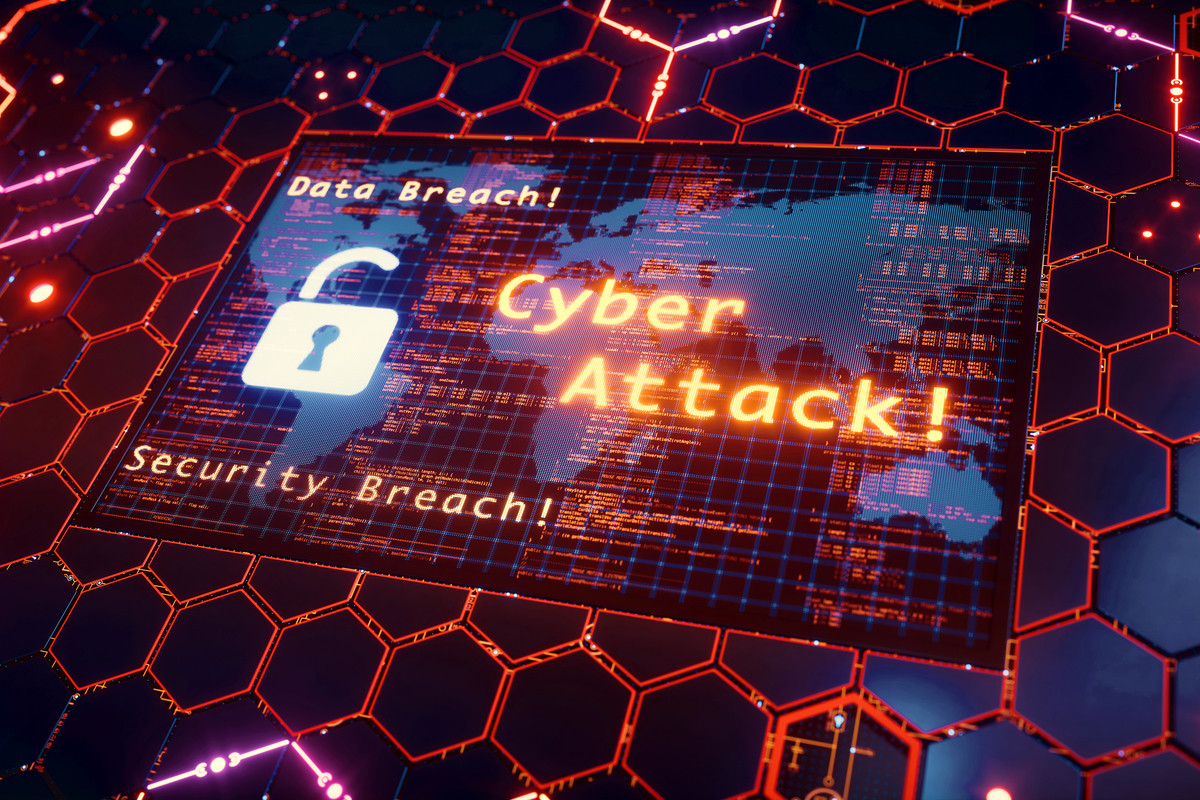 As much as every organization wants to believe they are cyber secure, the reality paints a different story. Cybersecurity methods continue to evolve with an emphasis on tactics and technology. This progression of companies and government agencies follows the cybersecurity status quo that it’s a hardware and software issue.
As much as every organization wants to believe they are cyber secure, the reality paints a different story. Cybersecurity methods continue to evolve with an emphasis on tactics and technology. This progression of companies and government agencies follows the cybersecurity status quo that it’s a hardware and software issue.
And that’s just a complete disregard for the real problem. If you want to know why your cybersecurity methods are failing, it’s because it’s a people issue. This is a major theme of my book, The Smartest Person in the Room. It’s a reality that most organizations don’t want to face. Not because they don’t accept this notion; it’s because they don’t even have an awareness of it!
The Cybersecurity Landscape Points to Failures
There is plenty of available data and statistics that illustrate failures. They don’t necessarily lead to the why, but they are important for context nonetheless. Cybersecurity risk is growing, and incidents are increasing.
- Hackers attack every 39 seconds.
- Since the pandemic, the FBI reported that cybercrimes increased by 300%.
- There was a 67% increase in security breaches from 2014 to 2019.
- A record-breaking 15.1 billion records were exposed in 2019.
- There were 188 million ransomware attacks in 2019.
If you’re in the industry, these numbers aren’t new to you. However, that doesn’t mean they shouldn’t be eye-opening. The numbers continue to trend up, and an organization’s go-to for this is money and defenses.
Cybersecurity Method Failures Aren’t About Spend or Defenses
Cybersecurity budgets keep increasing. Financial services, one of the most prone to cyber-attacks, spend 10% of their IT budget on cybersecurity. Tech giants like Microsoft spend even more. The company’s CEO said they would spend more than $1 billion. Government spending is up as well, with the 2019 budget for the U.S. at $15 billion.
It’s not a money problem. Dollars are essential to fighting the cyberwar, for the best technology, talent, and infrastructures. Unfortunately, many organizations believe if they spend enough, they’ll be free from attack. High budgets do allow for more technology and people, but it doesn’t always equal a successful program. Companies often learn, when something goes wrong, that money and processes do make their networks impenetrable.
All you need to do is look at the SolarWinds hack, which led to the infiltration of at least 18,000 government and private networks. It illustrates the weaknesses of supply chain security and certainly didn’t happen because they weren’t spending buckets of money. There’s no definitive answer on what the failures were for this case, but in looking at alternatives, it could turn out to be a people problem.
One possible line to draw was that the former Chairman of the Joint Chiefs of Staff said of probable cyber attackers, “If they know that we have an incredible offensive capacity, it should deter them from conducting attacks on us.”
The position was that if would-be hackers knew the prowess of the U.S.’s cyber arsenal, they’d cower. That didn’t really work out very well and points to a larger problem within the cyber community. This example in no way characterizes these experts as incompetent. Rather, it shines a light on the culture of cybersecurity.
What’s the Real Reason Cybersecurity Measures Aren’t Working?
As I said in the introduction, it’s the people entrusted with the security. It doesn’t necessarily mean they aren’t knowledgeable or don’t have training and experience. The profession is broken. Those who are practicing cybersecurity and the leadership that manages, hires, and recruits them need a reset.
Here’s why you’re failing and what you can do about it.
Cybersecurity Professionals Aren’t Passionate
Most would say that to succeed in a career, passion is necessary. If you look at those who have achieved great things in any profession, it wasn’t their intellect alone. They had the drive and were invested in their work. Most cybersecurity professionals don’t have this. They don’t take it seriously or simply want to punch a clock. They believe it’s a stable career and do the minimum.
On the other side, cybercriminals are passionate. This is their livelihood, and they treat their endeavors like Olympians chasing gold medals. When there’s this kind of imbalance in protectors versus perpetrators, the hackers are going to win.
The Prevalence of Paper Tigers
Paper tigers in cybersecurity are diluting the profession. What it means is they look good on paper — they have a certification or multiple ones as proof that they know what to do.
Unfortunately, they don’t.
They have very little real knowledge or experience. Organizations hire them, and they immediately become a risk, not a value. They don’t know what they don’t know, and that’s scary. Paper tigers also tend to have fragile egos, so they’ll never admit they don’t have the answer or understand the situation. They’ll keep backpedaling and become defensive instead of being communicative and collaborative.
The situation becomes worse as paper tigers hire paper tigers. Then you have a whole team of “professionals” that have no idea how to protect your data and infrastructure.
A Culture of Insecurity
As I just touched on, paper tigers are insecure. So are many in the profession, regardless of their skillset. Technical folks take a lot of self-worth and value in their career, and that would plummet if they suddenly admitted they weren’t the smartest person in the room. They feel they have earned their way because they have the certifications or degrees on the wall.
Insecurity means people are closed off from learning and growing. Their blind spot keeps getting bigger. In turn, they begin making cybersecurity methods more complex and complicated, believing only they know how to apply them. Such a framework doesn’t provide any guarantees that you’re free from risk. In fact, they can make you less secure. It’s like having 10 locks on your door but leaving it wide open. It’s an illusion of security.
Insecurity and Fear Lead to Posturing
Those in charge of cybersecurity also have fear mixed with insecurity. They are fearful that peers or leadership will find out that don’t have all the answers or experience. So, they counter by posturing. The posture they present is that they “know” what’s going on and how to be cyber secure. This defense mechanism results in using big words and overcomplicating the basics. In reality, there are five CIS (Center for Internet Security) Controls that will stop 85 percent of all attacks. Further, cybersecurity professionals who posture don’t even cover the basics:
- What do you do?
- What are you trying to protect?
- What’s important to the business?
Paper tigers and insecure people aren’t going to ask any questions! They’ll just start laying out jargon and puffing their chests. They only want to seem like they have it under control when there’s a fire in the kitchen, and they don’t even know what baking soda is.
The Biggest People Problem? Communication
There’s a consensus among many that technical people have bad communication skills. That’s not universally true, but I would say it’s the biggest people problem in cybersecurity. They are long on jargon or buzzwords and short on substance.
They also often can’t articulate how and why they do things, and they certainly butt heads with business-focused colleagues. Poor communication skills or lack of altogether is why cybersecurity groups fail internally most of the time.
If there’s no openness in communication, there’s no collaboration or teamwork. Cybersecurity has to be a group effort, and everyone must be on the same page. That’s hard when there are communication barriers.
Moving from Failure to Succeeding in Cybersecurity
Fundamentally, if your business has been the victim of cybercrime, it was likely a people problem. If you haven’t had an incident, it’s probably a matter of if, not when. In either situation, you need to make some people changes.
My approach to solving the people problem and bolstering cybersecurity is the Secure Method. This approach focuses on soft skills and helping professionals lead with their head and heart. It’s a step-by-step guide with seven parts:
- Awareness of self and others
- Mindset moving from fixed to growth
- Acknowledgment of self (removing ego) and others when they make positive changes
- Communication (words, tone, and body language): learning how to articulate feelings and situations and listening
- Monotasking (concentrated work)
- Empathy (looking at other’s perspectives with compassion)
- Kaizen (change for the better by being better)
I’ve given you a very brief explanation of each step. There is a lot more, including how to make it through each step. The Secure Method is actionable, and any organization can use it to solve the people problem.
You can read all about it by ordering my book, The Smartest Person in the Room. It will give you a unique perspective on cybersecurity and how to harness and develop talent to really be cyber secure.












